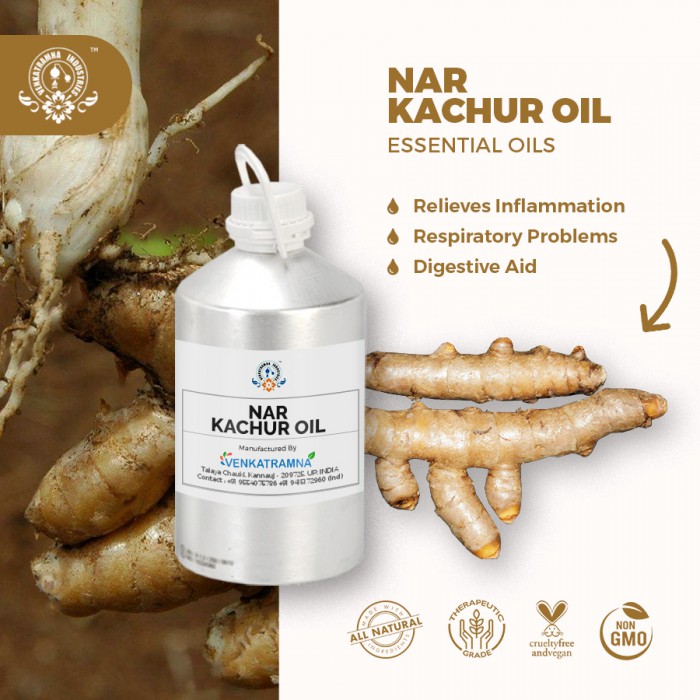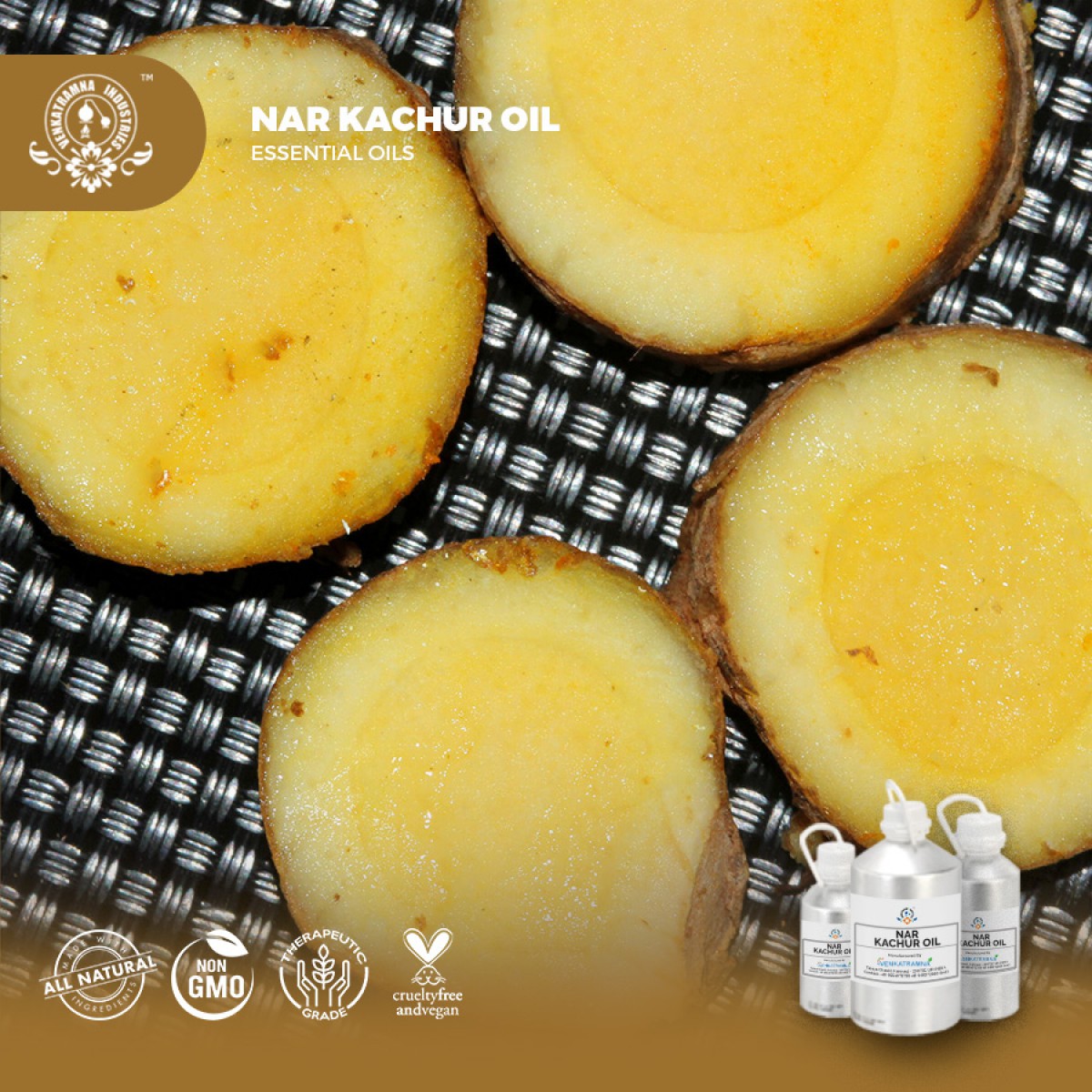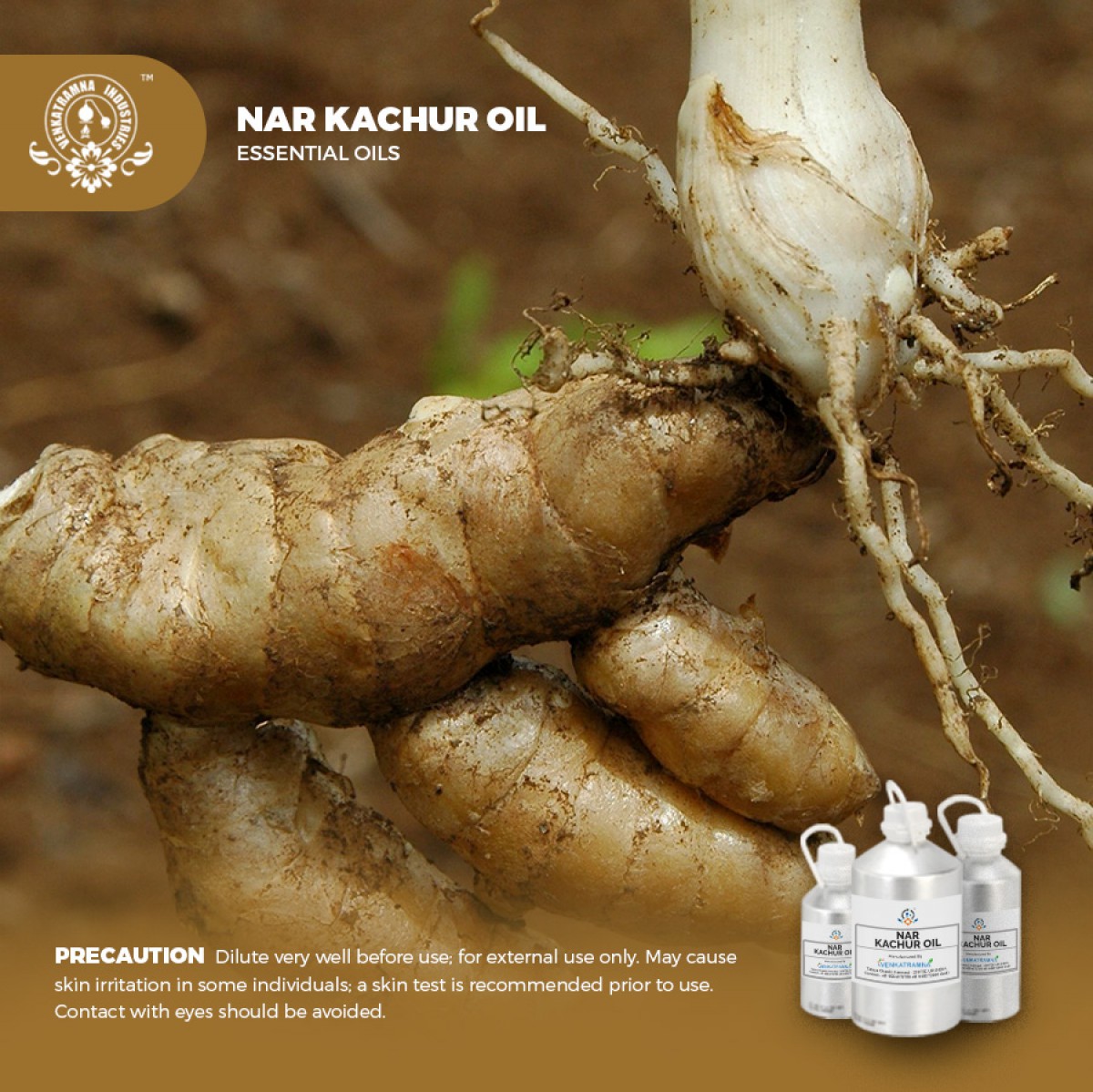Botanical Name: Curcuma Zedoaria Common name: Zedoary, White turmeric, Temu putih Read More
|
Botanical Name: |
Curcuma
Zedoaria |
|
Common name: |
Zedoary, White turmeric, Temu putih |
|
Plant
family: |
Zingiberaceae |
|
Genus: |
Curcuma |
|
Appearance/Color: |
Golden yellow viscous liquid |
|
Odor: |
It has
a warm-spicy, woody & camphoraceous cineolic odor |
|
Blends With: |
Sandalwood |
|
Origin: |
India |
|
Source: |
Rhizomes |
|
Method
of Extraction: |
Steam
Distillation |
Plants of ginger family
(Zingiberaceae) have been frequently and widely used as spices and in
traditional systems of medicine practiced in many Asian countries, and their
medicinal functions have been broadly discussed and accepted in many
traditional recipes. The Zingiberaceae plants contain several volatile and
essential oils including terpenoids, phenylpropanoids, flavonoids, and
sesquiterpenes, which has reported antitumour activity. As plants of
Zingiberaceae family are considered safe for human consumption, these species
are excellent candidates for development of novel chemotherapeutics.
Traditionally, curcuma drugs called “Ukon” and “Gajutsu” in Japanese have been
used in oketsu syndromes (caused by the obstruction of blood circulation) in
Chinese medicine. Various antineoplastic compounds have also been isolated from
curcuma species.
Curcuma zedoaria, a medicinal tuber plant belonging to this family, is a close relative of Curcuma longa from which the curcumin is isolated. Various parts of Curcuma zedoaria are used in Ayurveda and other folk and tribal system of medicines. Curcuma zedoaria is a constituent of a wide variety of ayurvedic preparations like Dasamularishtam, Valiya Rasnadi Kashayam, and so forth. The rhizome is used for curing stomach diseases, toothache, blood stagnation, leucoderma, tuberculosis, enlargement of spleen, and for promoting menstruation in traditional medicine in Asia. Anti-inflammatory activity, antifungal activity, antiulcer activity, antimicrobial effect, hepatoprotective activity, antiamoebic effect, of this plant rhizome have been reported. The Curcuma zedoaria rhizome is termed Ezhu in Chinese and is extensively used in traditional Chinese medicine to treat various ovarian and cervical cancers. Curdione isolated from this plant has been found to inhibit prostaglandin E2 production and cyclooxygenase-2 expression, both of which are implicated in inflammation and carcinogenic process.
DISCLAIMER
The complete range of conditions
or methods of use are beyond our control therefore we do not assume any
responsibility and expressly disclaim any liability for any use of this
product. Information contained herein is believed to be true and accurate however,
all statements or suggestions are made without warranty, expressed or implied,
regarding accuracy of the information, the hazards connected with the use of
the material or the results to be obtained from the use thereof. Compliance
with all applicable federal, state, and local laws and local regulations
remains the responsibility of the user.
The FDA has not evaluated the
statements on this website. No claims are made by Venkatramna Industries as to
the medicinal value of any products from vriaroma.com or by us. The information
presented here is for educating our customers about the traditional uses of
essential oils and is not intended to diagnose, treat, cure, or prevent any
disease. You are responsible for understanding the safe application of these products.
If you have any questions, please call or email us for further information.
As per NAHA guidelines, New Directions Aromatics
(NDA) does not recommend the ingestion of essential oils. It is imperative to
consult a medical practitioner before using Essential Oils for therapeutic
purposes. Pregnant and nursing women and those taking prescription drugs are
especially advised not to use this product without the medical advice of a
physician. The oil should always be stored in an area that is inaccessible to
children, especially those under the age of 7.
Zedoary
has been used in the traditional system of medicine in India and Southwest Asia
in treating many human ailments and is found to possess many biological
activities. The rationale of the present study was to isolate, identify, and
characterize antitumour principles from the rhizomes of Curcuma
zedoaria, to assess its cytotoxic effects on human and murine cancer
cells, to determine its apoptosis inducing capacity in cancer cells, and to
evaluate its tumour reducing properties in in vivo mice models.
C. zedoaria is a
well-known ethnomedicinal plant that is also used in Ayurveda. Its use in the
Indian traditional folk medicine is also well documented. Below are different
parts of C. zedoaria which have different applications in
traditional systems of medicine.
|
Plant parts |
Traditional uses |
|
Oil of rhizome |
Stomachic, emmenagogic, vomiting, menstrual haematometra |
|
Fresh roots |
Treatment of leucorrhoeal discharge |
|
Tuber juice |
Treatment of worms in children |
|
Powdered rhizome |
Antiallergant |
|
Leaf juice |
Treatment of dropsy |
|
Leaf juice |
Treatment of leprosy |
|
Leaf paste |
As plasters in lymphangitis, furunculosis |
Zedoary
root is actually a rhizome with a thin brown skin and a bright orange, hard
interior. It’s smell is similar to turmeric and mango. Because of the
mango-like fragrance, zedoary is called amb halad in many Indian languages (amb
means mango). It is sold as a powder, or dried and sliced with a gray surface
with a yellow to gray-white interior. It is a part of great Indian spices used
to flavoring in the foods.
COMMON
USAGE
·
Digestive
Aid
·
Respiratory
Problems
·
Relieves
Inflammation and Pain
·
Antimicrobial
activity
·
Anti-inflammatory
and painkiller property
·
Anti-allergic
activity
·
Antibacterial
and antifungal
·
Antinyeri
medicine
·
Ulcer
medicine
·
Anti-cancer
·
Lowering
blood sugar levels
Ingredients:
|
S.No |
Key Constituents |
Strength (%) |
|
1 |
Epicurzerenone |
24.1 |
|
2 |
Cuzerene |
10.4 |
|
3 |
Curdione |
7.0 |
|
4 |
5-Isopropylidene-3,8-dimethyl-1(5H)-azulenone |
4.3 |
|
5 |
Isocurcumenol |
3.0 |
|
6 |
Spathulenol |
3.0 |
|
7 |
Curzerenone |
2.4 |
|
8 |
1,8-Cineole |
2.0 |
|
9 |
b-Elemene |
1.9 |
|
10 |
Camphor |
1.7 |
|
11 |
Curcumol |
1.4 |
|
12 |
Eudesmol |
1.4 |
|
13 |
a-Selinene |
1.3 |
|
14 |
b-Bisabolene |
1.2 |
|
15 |
Germacrene B |
1.2 |
|
16 |
a-Caryophyllene |
1.0 |
|
17 |
a-Curcumene |
1.0 |
Safety Summary
·
Hazards: May
interfere with gestation.
·
Cautions: Pregnancy,
breastfeeding.
Organ Specific Effects
·
Adverse skin reaction: No information found.
·
Reproductive toxicity: Chinese zedoary oil was administered to
pregnant mice on gestational days 4–6 as a 1% or 10% aqueous solution with
Tween 80 as an emulsifier. Ip doses of essential oil were 156, 310 and 625
mg/kg on gestational days 2–4, and sc doses were 600 and 900 mg/kg/day on
gestational days 4–6. Prevention of implantation was dose-dependently
successful, ranging from 10% to 80% ip, and from 70% to 90% sc. The oil
prevented 77% of pregnancies in female rats when given ip at 300 mg/kg on
gestational days 7–9. It prevented 16% and 100% of pregnancies in female
rabbits when administered intra-vaginally at 60 or 400 mg/kg/day on gestational
days 5–9 and 2–4, respectively. The oil was steam distilled, but no
compositional details were given. Ethanol extracts *Isomer not specified and
decoctions of zedoary rhizomes also have anti fertility effects. Subsequent
research shows a strong link between the embryo toxic effect of zedoary oil and
its anti angiogenic action.
·
Hepa totoxicity: Single oral doses of 12.5, 25 or 50 mg/kg of
either germacrone or curcumenol showed dose dependent protection against liver
injury induced in mice by D-galactosamine /lipopolysaccharide or TNF-a.
Systemic Effects
·
Acute
Toxicity: No data found.
·
Carcinogenic/anti carcinogenic potential: A Chinese hydro distilled zedoary oil was
cytotoxic to mouse melanoma B16BL6 cells, and to human hepatoma SMMC-7721
cells. Zedoary oil also inhibited angiogenesis in mice. The essential oil
analyzed by Mau et al 2003 was cytotoxic to human leukemia HL-60 cells, with an
IC50 of 500 ppm. a- Caryophyllene and b-elemene display anti carcinogenic
activity. Germacrone dose dependently inhibited the growth of human breast
cancer cells in vitro. Curzerenone has been used as an anticancer agent in
China.
·
Acute aquatic toxicity: Not determined
·
Persistence and degradability: Not
available.
·
Bioconcentration Factor: Not determined
·
Mobility in soil: Not available.
·
Results of PBT and vPvB assessment: Not
determined
Do not allow the material to enter streams, sewers or other
waterways.





 MSDS-Narkachur.pdf
MSDS-Narkachur.pdf




